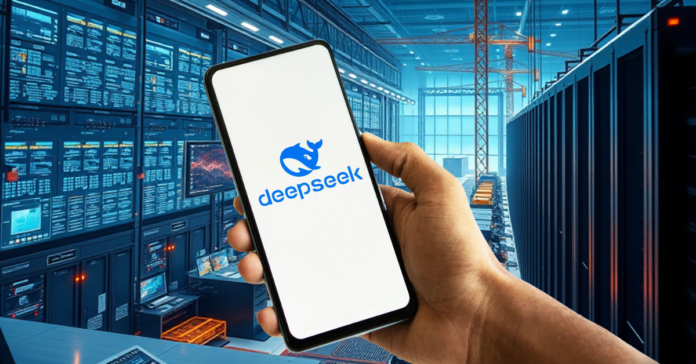Experts believe the Chinese company’s highly efficient chatbot won’t reduce the need for U.S. data centers and the energy projects that serve them.
When DeepSeek, a China-headquartered AI company, drew a bid of interest to its low-cost AI model earlier this year, many began to wonder whether some of the forecasts calling for demand for data center power were exaggerated. DeepSeek, which specializes in building (“large language”) models that are similar to the ChatGPT by OpenAI, insists that its highly-efficient AI technology will produce costs of computing and power usage well below other alternatives, challenging us to speculate how much energy infrastructure data center occupants of tomorrow will consume. However, John Medina, senior vice president at Moody’s Ratings, believes that growth could accelerate due to advances in power and computing efficiency— rather than allow us to project lower energy consumption.
“The result is to decrease the cost of computing and perhaps enable new companies and new applications to be utilized,” Medina said. “It could in effect drive more usage than less.” Mitchell Osborne, director of MEP at a Minneapolis-based general contractor, Adolfson & Peterson Construction, agrees. “While more efficient AI models will reduce power consumption, we are still in the early stage of AI and quantum computing,” Osborne said. “I don’t see the construction of data centers or power infrastructure slowing at all.” Power construction is growing in tandem with data center projects as contractors work to keep pace with insatiable demand, according to sources in the industry. Businesses, including major technology companies such as Amazon, Microsoft and Meta, will continue to add data center capacity at a rapid pace. Any additional uncertainty in the supply chain will catalyze the construction of additional data center facilities as the need for scale in many different sectors, according to a previous White House press conference, has led to a structured investment of $100 billion in artificial intelligence infrastructure through a joint venture among OpenAI, Softbank and Oracle that could expand to $500 billion in spending. That investment on artificial intelligence infrastructure is being met with an ongoing surge in power construction throughout the country, Ryan Wobbrock, Vice President at Moody’s Ratings, added. Utilities who are commonly power producers are ramping up spend to meet the energy requirements of data centers, he said. “We’re certainly following a good bit of that, (the data center growth) and seeing that actually, the fruit of that is showing up from these companies in announcements,” Wobbrock said. “Any time that you see a public announcement from a company, it seems (like) they are increasing their capital – quite a bit of that is predicated on the growth of data centers.”
New Developments and Refurbishments
The growth of new power construction is causing local grid work as well, stated Osborne.“I absolutely see data center and power project trends continuing,” stated Osborne. “In the local market, specifically substations are being built for data centers and stability upgrades are being paid for by these companies to upgrade current local grids.”Older power plants that were going to be retired have been upgraded as opposed to decommissioned, stated Michael Byrne, vice president at Linesight, an international construction consultancy firm based in Dublin. That is because new power projects still cannot keep up with the level of growth of data centers in important areas.
From 2014 to 2016, data center energy use was about 60 terawatt-hours. In 2018 that number was about 76 terawatt-hours. In 2023, data center energy was at 176 terawatt-hours and represented about 4.4% of total US electricity consumption. The amount will reach between 325 and 580 terawatt-hours by 2028, according to the Energy Department.The US power grid was not designed for those levels of demand growth, stated Theodore Paradise, chief policy and grid strategy officer at CTC Global, an advanced conductor manufacturer for overhead transmission powerlines, based in Irvine California.
“The transmission system is the essential enabler of all that. It is the existential component to whether you can add additional supply,” said Paradise. “Interconnection costs [are] getting larger. They may have been $20 million or $40 million for substation work. Now, we see interconnection costs [that are] hundreds of millions of dollars or over a billion dollars in some cases.”
Nevertheless, this isn’t hindering the construction timeline for data centers. Some developers are even moving ahead without fully secured contracts for power, Byrne noted. Osborne remarked that it depends on what phase of construction the data center or campus is in. “If it is a single building or getting an expansion on a building that was built some time ago, we are seeing gaps in power availability due to permitting and just the design of the local substations,” Osborne said.
“Hyperscalers and colocation campuses are usually pretty good about trying to do a general pre-planning during the real estate procurement phase and studying with the local utility companies what the expected load for the data center will be and when they will start the project.” Meanwhile, the tech giants have opted to take these solutions into their own hands. These deep-pocketed companies are beginning to fund and develop on their own, Medina said. “The new trend is to be building a new data center, really big, and to be building a plant right next to it, basically building both of them together,” Medina said. “The hyperscaler will pay for both. They build a gas plant, part solar and part battery and build a big data center, all in conjunction. Almost like an island.”
Headwinds to Power Construction
As the construction industry encounters obstacles caused by skilled labor shortages, Osborne continues to think this is an overall negative wind on construction activities. “With the ever-growing amount of data center construction starts, the number of teams with experience successfully completing projects will also be competition,” said Osborne. “Not only will contractors be competing for work with developers and clients, but our competition is for the people to build the number of projects we are starting, which is a problem for developers and contractors.” Some of the sustainability goals may also slow the speed of construction activity, said Byron Sarhangian, partner with Snell & Wilmer, a law firm based in Phoenix. He warned that strict environmental requirements could burden U.S. progress on AI, especially as compared to foreign nations.
“When a company requests a gigawatt of energy, and it must be green, all of a sudden it’s, ‘Listen, not sure you can even get a gigawatt of energy,'” Sarhangian said. “Frankly, we are in a race with a number of countries, including China, as it relates to quantum computing and AI. It’s almost like being in the space race and saying, ‘We are going all green.’ Not the time, we need absolutely every piece of energy infrastructure that we can have.”
Looking Forward
The pressure to acknowledge these concerns is reaching the federal level; the Trump Administration recently announced an executive order stating an energy emergency and is moving quickly to allow for new construction of power generation and transmission. “That’s no small deal, that’s a major executive order,” said Paradise. “What the administration is doing in issuing that is to say, ‘What is happening now, is not meeting our energy needs, this is not working.'” Interest in nuclear energy as a possible solution is also increasing, especially among hyperscalers with very aggressive commitments.
For example, Microsoft is looking at potential nuclear energy sources for data centers, however, large scale development is still several years away.”This is still some time away before we see a rollout of small modular reactors on data center campuses,” Byrne stated. “Nuclear energy will mostly be utilized for bigger campuses, at 1 gigawatt, or higher.
And those projects are just now beginning.” In addition, state and federal regulators may start to be weighing in on expansion of construction, Osborne noted. “As power consumption continues to increase, I think what we see is state and federal policy changes that may prohibit or encourage data center expansion and usage, as well as AI usage,” stated Osborne.


